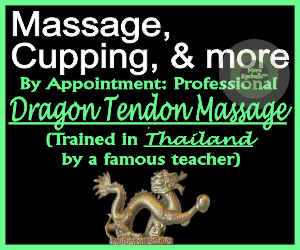

Now, a task force has released a document calling for certain competencies for hospital-based massage therapists.
“Hospital Based Massage Therapy: A Call for Competencies” was created by the Hospital Based Massage Therapy (HBMT) Task Force through the Academic Collaborative for Integrative Health (ACIH), and released in April. The document details the results of a 2014 survey of U.S. hospitals regarding educational requirements, orientation procedures and competencies related to their massage therapists.
Although confirmed statistics are not available for the number of U.S. hospitals offering massage, task force member MK Brennan told MASSAGE Magazine that the ACIH knows of approximately 250 hospitals that utilize it.
What follows is the document created by the task force. (Read an interview with Brennan in the June print issue of MASSAGE Magazine.)
Hospital Based Massage Therapy: A Call for Competencies
By MK Brennan R.N., M.S., L.M.B.T.; Dale Healey, D.C., Ph.D.; Carolyn Tague, M.A., C.M.T.; Beth Rosenthal, M.P.H., M.B.A., Ph.D.
Abstract:
An increasing percentage of hospitals are offering massage therapy to their patients. Massage therapy is the top CAM service provided on an outpatient basis.
The ACIH’s HBMT Task Force was formed to explore the need for a set of standard competencies for the practice of massage therapy in hospital environments, given that no such resource exists. A standard set of competencies will be useful to hospitals, massage therapy schools and massage therapists themselves.
The task force designed a survey that was distributed to a convenience sample of hospitals to assess various elements of their massage therapy programs.
Thirty-two out of 37 hospitals that received the survey completed it, resulting in an 87 percent response rate. With recognition of a small convenience sample, we believe the high response rate and the extent to which respondents provided in-depth information to the open-ended questions indicates interest in and a recognized need for HBMT competencies.
The wide range of responses relative to educational requirements, orientation procedures and competencies in general, suggests a need for standardization of competencies to support safe and effective HBMT services for patients. Next steps will be to work with educators and practitioners in the HBMT field to augment the ACIH Competencies for Optimal Practice in Integrated Environments and develop specific competencies for hospital based massage therapy.
Introduction
Need for competencies in hospital setting. Massage therapy has a long history of being offered in hospital settings and the need for standards was recognized over a hundred years ago. During the early part of the 20th century, the American Journal of Nursing included several papers detailing training standards, qualifications, rudimentary competencies, and physiological effects relative to massage therapy in the hospital setting (Bartlett, 1901; Biermann, 1907; Churchill, 1915).
These papers were primarily developed for nursing staff and while those standards may have been appropriate at that time, they may not meet the needs of today’s massage therapy practitioners in the hospital setting.
The fact that these competencies were developed so long ago demonstrates that there was recognition that hospital massage standards were important for practice and points to the need for an updated set of competencies.
Having competencies for massage therapy in hospital settings is particularly important given massage therapy’s increasing popularity in the hospital setting and the fact that practice in hospital settings is significantly different than other settings. (American Hospital Association, 2007)
An increasing percentage of hospitals are offering complementary, alternative and/or integrative health care/medicine services. These services were formerly referred to as complementary and alternative medicine (CAM) services and now may be identified as complementary and integrative medicine or health (CIM) or (CIH).
For convenience, we will use the CIM abbreviation throughout this paper to refer to complementary, alternative and/or integrative health care/medicine. Massage therapy is one of the most popular CIM therapies among patients and hospitals alike.
A survey conducted by Health Forum, a research division of the American Hospital Association, found that massage therapy is the top CIM service provided on an outpatient basis and is the second most popular CIM service behind pet therapy in inpatient settings (American Hospital Association, 2007).
The same survey cited patient demand as the number one reason hospitals offer CIM services. As patient satisfaction becomes an increasingly important measure for hospitals, availability of massage therapy will soon be standard in hospital care.

Benefits of Massage Therapy in Hospital Settings
Massage therapy is used to address some of the most common general symptoms that come with a hospital stay including, but not limited to, pain, stress, anxiety, and insomnia (American Hospital Association, 2007). Richard’s (2000) systematic review of 22 studies of massage therapy, found that massage is effective in reducing pain, decreasing anxiety, and producing physiologic relaxation.
Formation of ACIH HBMT Task Force
In the spring of 2012, the Hospital Based Massage Therapy Task Force was formed as part of the Academic Collaborative for Integrative Health (formally known as the Academic Consortium for Complementary & Alternative Health Care) Clinical and Education Working Groups.
ACIH is an interprofessional consortium created in 2004 to enhance inter-disciplinary collaboration by fostering mutual respect and understanding among all healthcare disciplines.
ACIH core members are from the five licensed integrative, complementary and alternative disciplines: acupuncture and Oriental medicine, chiropractic, massage therapy, direct-entry midwifery, and naturopathic medicine.
The HBMT task force was created to address the issue that although massage therapy is frequently used in hospitals, there are no standard competencies to prepare practitioners for practice in this environment, and hospitals are often unsure about what to look for when hiring massage therapists. While some massage schools have created HBMT programs, there are no widely accepted standards for these programs.
The vast majority of massage schools prepare students for more controlled employment environments without consideration for the medical, cultural, and physical complexities of the hospital environment. Several aspects of the acute care setting require skills beyond those required for other typical massage therapy practice settings. The patient population, psychological stressors, the physical environment, and the interprofessional nature of the acute care setting all require training beyond the basics that most massage schools provide.
There is a growing list of resources for the hospital, school or therapist wishing to participate in the HBMT movement. HBMT was established in 1995 and offers a plethora of resources, although it has not recently been updated.
Gayle MacDonald’s (2005) text, Massage for the Hospital Patient and Medically Frail Client provides an excellent overview of topics necessary for the practice in the hospital environment. The ACIH HBMT task force believes a missing piece in this growing list of resources is a standardized group of competencies for effective practice in hospital environments.
ACIH HBMT Task Force Goals
The ACIH HBMT task force decided to gather baseline data about HBMT training and the need for a standard set of competencies for hospital massage therapists practicing in this environment. The goal was to determine if there was a need for competencies, and if so, to develop a standardized group of competencies for effective practice in hospital environments.
The ACIH Competencies for Optimal Practice in Integrated Environments (2011- http://accahc.org/competencies) would be used as a basis for developing HBMT-specific competencies.
Specific HBMT competencies that result from this project could be used by hospitals to inform the interviewing and credentialing process, and by massage therapy schools and continuing education providers to develop hospital-based massage therapy training programs.
A common set of competencies could also remove a barrier for hospitals seeking to develop massage therapy programs, but have heretofore not known the standards by which hospital based massage therapists should be held as well as provide a framework for specialty certification for Hospital Based Massage Therapy.
Massage therapists could use the competencies as a tool to evaluate whether the hospital environment is right for them and inform them of the skills they would need to practice in that environment.
Methods
Survey Design
The HBMT task force created an information gathering instrument (an online survey) which was sent to 37 HBMT programs to assess the need for competencies. The intent was not to create a database of massage therapy hospital programs, but rather to gather broad information at first (with the survey) and potentially go deeper with a smaller subset (of the training programs) after the initial data collection had been completed.
Survey Questions
Survey questions were developed to gather information about the structure of massage therapy services including: hiring requirements and employment status, educational requirements of therapists, training or orientation provided, populations served, volume statistics, financial supports, oversight structures and the like. Several of the questions were specifically designed to get a sense of where the hospital placed massage therapy on the continuum of professional patient care. The survey was reviewed by ACIH working group members. The questions were closed-ended as much as possible, both to make it easier for participants to respond and to allow for greater comparison between responses.
Survey Collection
A list of hospitals with massage therapy programs and the individuals associated with those programs was compiled by the task force members based on their experiences and associations. Individuals who received the surveys were also asked to send us any information they had about other HBMT programs so we could contact those individuals as well. Additionally, during the 2013 International Massage Therapy Research and 2013 International Congress for Educators in Complementary & Integrative Medicine conferences announcements were made about the project with a request to contact a member of the ACIH HBMT task force who was in attendance with information about individuals who worked with or had knowledge about HMBT programs.
The survey was sent to 42 individuals at the 37 hospitals identified. Again, because this was not meant as a scientific study but rather as a tool to begin gathering information about what was happening in HBMT settings, we used a convenience sample of institutions known to ACIH HBMT task force members. We recognize that our sample may not be representative of all HBMT programs.
The survey link was sent via email in Mid-May 2013. Approximately two weeks later, in the beginning of June, follow-up emails were sent individually to non-responders.

Results
Response Rate
Eighty-seven percent of hospitals responded to the survey (32 responded out of the 37 who received the survey). The survey was sent to 42 individuals within those 37 hospitals. Thirty individuals responded, for a response rate of 71% for individuals (in one instance the same person was able to complete the survey for three different hospitals).
Summary of responses for each question
The majority (69%) of HBMT programs responding were not connected with schools or education programs. Sixty-six percent provide in-house training or orientation specifically for the massage therapy position, but there is an extremely wide range of training or orientation among respondents: everything from 500 hours of an internship type training to only 20 hours which is mostly shadowing or on-the-job training. Almost all the respondents providing an orientation took the time to describe their orientation program.
Almost 85% of respondents said they have a job description for the massage therapist. Sixty-six percent of all respondents indicated that competencies are included in the massage therapy job description.
In responding to the question about what massage therapy training or credentials are required to provide HBMT, respondents indicated the following:
Graduation from a massage therapy program (81%);
Massage Therapy training required by state or local regulations (75%);
Licensure (75%);
Additional training (44%);
National Certification (38%).
For those that selected “Additional training” (44%), it appears that hospital based or oncology massage is most often preferred. Some respondents indicated that maternity or pediatric massage specific training is required.
Many respondents provided details elaborating about other credentialing or additional training or degrees required or desired. Thirty-nine percent of respondents indicated that massage therapists are clinically supervised by massage therapy specific supervisors. Others reported supervision by clinicians from a different discipline. Eighteen percent report no clinical supervision at all (only administrative oversight).
As for receiving the massage therapy service itself, 94% of respondents offer massage to inpatients. Seventy-five percent of respondents offer massage in outpatient settings.
Inpatients access massage therapy sessions most frequently by MD, RN, PT referral (74%) and by patient, family, hospital staff request (58%). The most common settings for massage offered to outpatients are Medical Clinic/Offices (64%) and Infusion Centers (56%).
Thirty-two percent of respondents feel massage therapists are not prepared to work in the hospital environment prior to their employment or association. Specific competencies missing include:
Documentation/charting/ability to clearly state patient assessment and treatment plan; oncology specific training; hospital environment logistics, communications with hospital staff, hospital etiquette (culture), safety issues related to environment; electronic health records (EHR), understanding of appropriate therapeutic relationships, actual hospital experience or internship work experience; medical terminology; understanding of medical devices and precautions; infection control; contraindications for massage; working with healthcare teams (Medical teams).
Almost half of the respondents indicated that their HBMT programs participated in research. Up to 58% respondents report a paid status of some type for their massage therapy staff. The second most common response (24%) indicated student interns. Volunteer status was reported by 18% of the respondents.
The median number reported of massage therapists involved in a HBMT program was tied at 3 and 4. The largest teams are 37 and 24 massage therapists and two hospitals reported staffs of one. In response to how massage therapy sessions are paid for, we found that sessions are most often paid by philanthropic donations and from hospital budgets.
Self-pay and complimentary sessions were identified by fewer respondents. Insurance reimbursement was indicated by only three respondents, and seemed to be tied to outpatient service or in conjunction with chiropractic service. One indicated a pilot being conducted to bill insurance for reimbursements.
Almost 60% of respondents indicated that acupuncture and Oriental medicine (AOM) was provided at their hospital; 16% indicated chiropractic services were offered and 9% each for direct-entry midwifery and naturopathic medicine. Seventy-five percent indicated that other CIM services were provided.
Seven respondents let us know about other HBMT programs. All 32 hospitals provided the name of their hospital. Twenty-eight respondents indicated they would be willing to be contacted by members of the ACIH HBMT task force which is helpful for the next steps to be taken in the development of competencies and possible need for further input based on initial survey responses.
Discussion
Survey Limitations
In using a convenience sample of known HBMT programs, we acknowledge that we may have a very HBMT “friendly” group of hospitals, more likely to support the need for HBMT competencies. This group may not be a true representative sample of all hospitals with HBMT programs.
Another limitation of the survey is the sample size. While we were very happy with our response rate, the absolute number of survey respondents limited the statistical methods that could be used to analyze the data. The strength of conclusions drawn from this relatively small sample size is therefore somewhat limited. In essence, this survey could be considered a pilot survey for more in-depth investigation.
Implications of Findings
This initial look at HBMT programs offered across the United States confirmed that services were being provided to hospital patients, family, and/or staff with a tremendous amount of variation in delivery and practice standards.
Along with the variations in who receives a massage and the employment status of the massage therapists, there clearly are not a set standard of competencies across the board for the massage therapists. While some of the programs reviewed did require specific education of the therapists that provided some assurance of their ability to work in a hospital setting with patients, this was not found to be the norm. All of this points to the need for further study and the development of competencies and training programs for HBMT.
Variance in employment status of the massage therapists may be unique to HBMT and an indicator of undefined standards. From students to volunteers to paid employees, there is no consistency in the pay or work status for massage therapists. Respondents indicated a clear dedication for the expansion of massage therapy in their facilities.
Responses included “grow and improve for the continued comfort care given to patients with much respect from the massage community as well as the hospital community” and “am working with administrators to change required credentials, orientation, length of sessions, charting, and data gathering” as well as a desire to meet with the Chief Medical Officer to “Champion my massage program in order to get all the docs on board.” Overall, the message conveyed is that there are inconsistencies in delivery and pay for the therapists and the massage sessions but a desire to expand the availability of HBMT.

Conclusions and Next Steps
Most (69%) HBMT training at the institutions we surveyed is done through an orientation process and/or a wide range of on-the-job training methods. Respondents identified the need for additional training and competencies in several key areas. In our opinion, many additional areas of training are needed such as condition-specific massage protocols.
Based on these findings, we recommend one or more of the following be included in each institution’s HBMT program, in addition to having an orientation or training process:
- A base line or standard of competencies, educational requirements and/or curriculum specific to hospital based massage therapy successfully obtained by each hospital-based massage therapist
- A minimum of shadowing (on-the-job training) hours with an experienced hospital based massage therapist and/or clinical supervisor
- Competencies sign off prior to independently working with inpatients. (Completed by clinical supervisor)
- Clinical supervisor positions specific to massage therapy are highly recommended. This position would be responsible for arranging on the job training and review of competencies and sign off for independent work. These supervisors would also be available for questions, support, protocols, and Policies and Procedures development, and to liaison with other hospital staff and administration.
Regarding a base line or standard of competencies, educational requirements and/or curriculum specific to hospital based massage therapy, our recommendations include:
- Documentation/charting/ ability to clearly state patient assessment and treatment plan
- Oncology specific training
- Hospital Environment:
– Logistics
– Communications with hospital staff
– Hospital etiquette and culture
– Safety issues related to environment
- Electronic health records (EHR)
- “Self” work; Ability to hold space in difficult and complex circumstances
- “Real” hospital experience (internship or similar)
- Medical terminology
- Understanding of medical devices and precautions
- Infection control
- Contraindications for massage
- Working effectively with Healthcare teams
Regarding the need for condition specific protocols, additional curriculum development is suggested for the following:
- Stroke and head trauma
- Cardiac conditions
iii. Oncology
- Transplant Pts (pre and post op protocols)
- Orthopedic
- Maternity
vii. Pediatric
viii. Pediatric oncology
- End of life
- Disabled and wheel-chair ambulation patients
- Mentally ill
xii. Drug addiction/homeless
In summary, this survey was developed to get a better understanding of the need for specific competencies for massage therapists practicing in acute care settings. An online survey with 21 questions was sent to 37 hospitals known to be offering hospital massage therapy.
We believe the high response rate (87%) and the extent to which respondents provided in-depth information to the open-ended questions indicates interest in and a recognized need for HMBT competencies. The survey itself also served to educate respondents about ACIH’s existence and the ACIH Competencies for Optimal Practice in Integrated Environments.
The extreme variability in survey responses to key questions suggests there is no current standard of competencies. The wide range of identified curriculum and orientation needs suggests organizations adopting a standard competency policy could support more safe and effective HBMT services for patients.
Several individuals working in HBMT settings contacted us as a result of the survey and asked to be involved with our future work. Our next steps will be to continue working with educators and practitioners in the HBMT field to augment the ACIH Competencies for Optimal Practice in Integrated Environments and develop specific competencies for hospital based massage therapy.
Acknowledgements
We would like to acknowledge Kimberly Stevenson for her invaluable help in organizing and summarizing the data from the survey. We are very grateful for her contributions that helped move the project forward.
Declarations of interest: One author is a staff member of Academic Collaborative for Integrative Health (ACIH), and three of the authors are members ACIH Working Groups. One author is a member of the Education Committee of the Society for Oncology Massage and Founder of Tague Consulting which offers educational courses in hospital based massage and consulting services to hospitals and clinics.
One author is a COMTA, ACIH and S4OM board member and oversees the HBMT training program at Northwestern Health Sciences University (NWHSU). One author is the Society for Oncology Massage Board President and Chair of the Integrated Healthcare Committee at Carolinas HealthCare System University Hospital.
Contact information: For more information, visit www.accahc.org or contact brosenthal@accahc.org.
References
Academic Consortium for Complementary and Alternative Health Care (2011) Competencies for Optimal Practice in Integrative Environments http://accahc.org/images/stories/accahccompetencies_120612
American Hospital Association Survey through Health Forum (2007) http://www.ahadataviewer.com/about/hospital-database/
Bartlett, Helen Conkling (1901) The Teaching of Massage to Pupils in Hospital Training Schools. The American Journal of Nursing, 1(10), 718-721
Biermann, Helene (1907). Notes on Massage. The American Journal of Nursing, 7(7), 534-538
Churchill, Anna Quincy (1915). Massage, Its Physiological Effects. The American Journal of Nursing, 15(8), 635-640
Goldblatt, E., Snider, P., Rosenthal, B., Quinn, S. & Weeks, J. (Eds.). (2013). Clinicians’ and Educators’ Desk Reference on the Licensed Complementary and Alternative Healthcare Professions (2nd Ed), 60. Seattle, WA: Academic Consortium for Complementary and Alternative Health Care.
Hospital Based Massage Network. Resources. (2001) http://hbmn.com/2001.html
McDonald, G. (2005) Massage for the Hospital Patient and Medically Frail Client Baltimore: Lippincott, Williams & Wilkens
Richards, K.C., Gibson, R. & Overton-McCoy, A. (2000). Effects of massage in acute and critical care. AACN: Clinical Issues: Advanced Practice in Acute and Critical Care, 11(1), 77-96.
Comments
comments
Let's block ads! (Why?)




































































































